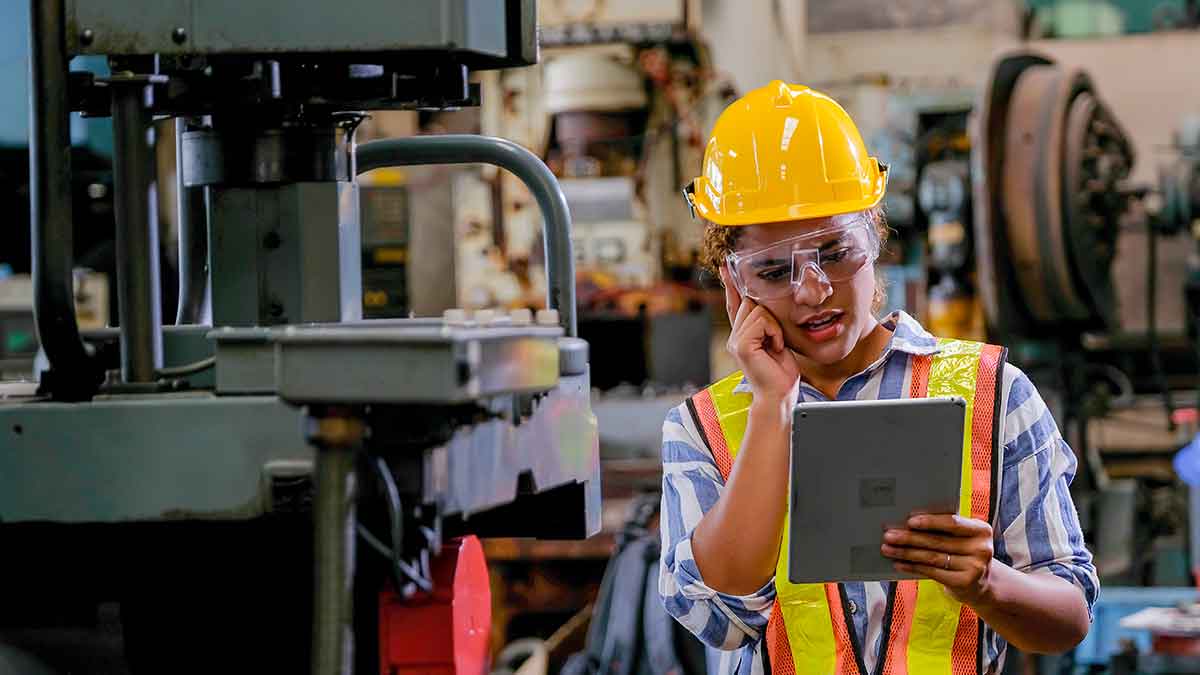Businesses have always developed elaborate maintenance plans and policies to optimize machine performance. While companies use maintenance plans to prevent and address problems, they can also be costly. For this reason, the global trend is changing, and companies are increasingly choosing preventive and proactive maintenance instead of corrective and reactive maintenance.
Reactive Maintenance Downsides
Sometimes workers can replace parts and components that work perfectly with newer ones. During scheduled maintenance, machinery is not functional. Additional staff must support a regular service program and analysis.
If workers do not follow a maintenance schedule, even simple upkeep procedures can become costly. Equipment can also fail even with a maintenance schedule.
Businesses often adopt a reactive approach to maintenance and repair in order to avoid these potential pitfalls. This can lead to inefficiency and waste. Production can be halted in unexpected ways, and then, damaged devices would need to be repaired and troubleshooted.
While manufacturers order, ship and install new parts and machines, workers and production lines remain in limbo.
Unpredictable expenses can occur at any time, and they often do so at the worst possible moment.
Businesses can avoid many of these problems by using the right technology.
IIoT and Proactive Maintenance
The Industrial Internet of Things (IIoT) is changing the way businesses approach maintenance and machine replacement.
IIoT promises to revolutionize the way companies approach equipment maintenance. Algorithms can pinpoint the time and place of preventive maintenance tasks more precisely on the computing side (to perform preventive maintenance on your machines, click here).
IIoT software will then be able to integrate this data with your company’s computerized maintenance management system (CMMS) and enterprise asset management software (EAM) to generate work orders, contextualize checklists and add nuance to reports.
Your business can save money, increase performance and maximize revenue by leveraging additional data from IIoT device sensors.
Industrial IoT possesses two main benefits for this sector: cloud access and proactive maintenance.
Cloud Access:
Cloud access which allows for unrestricted and secure access to real-time data and reports. A handful of operations can isolate data from individual machines, production lines and departments. Securely sending IIoT data directly to the cloud allows data from all devices, production lines, departments, and facilities to be collected and processed in one location.
It makes information immediately accessible to any member of your staff with an internet connection. The best part about it is that you can get deeper insights into your company’s operations with customized reporting
Fully integrated data allows you to create customized reports that provide the exact insights you require. A technician may require specific data from a machine over time to diagnose an issue. However, higher-ranking stakeholders might require an immediate report on total output or projections based upon the current situation.
IIoT provides reporting to give you and your team the information they need to make informed decisions, no matter if you are on the floor or in a C-suite.
You can offer new service contracts to customers if your company sells devices to other companies for their products. This will give you the opportunity to give your customers insights and predictive analytics that will make them more productive. In addition, these service contracts can add a new and very profitable revenue stream to your device sales.
Proactive Maintenance Benefits
The most important benefit of IIoT is that it allows manufacturers to shift from corrective and reactive maintenance to proactive and preventive maintenance, thus immensely reducing costs. But reducing costs is not the only advantage proactive maintenance offers to this sector:
- Dynamic maintenance plans can be developed based on actual wear and tear of components. Instead of replacing an item that is not working optimally, sensors can use condition-based maintenance models to detect when certain thresholds have been exceeded and initiate an automatic request for maintenance.
- Instead of having to stop operations due to an unexpected breakdown, your team can carry out required maintenance during planned downtime. This entails less surprises and material wastage and more productivity in less time.
- If product quality is at a low point, you can set up automated alerts to have them sent to the appropriate personnel.
- Because IIoT systems continuously monitor your equipment, you will have fewer maintenance staff. These systems use sensors to monitor data points like fluid levels, temperature, vibration rate and rotation speed to give you a complete picture about your equipment’s condition.
- Similar to devices and sensors, they can also communicate with one another to maximize performance in a particular piece of equipment or production line without the need for maintenance.
- The IIoT system can produce concise and actionable reports that are useful for anyone who needs them. Every employee in your company can benefit from the IIoT data, whether they are technicians or line workers.
It will only be matter of time before every company in the industry sees the benefits of proactive maintenance and inevitably follow the global trend.
